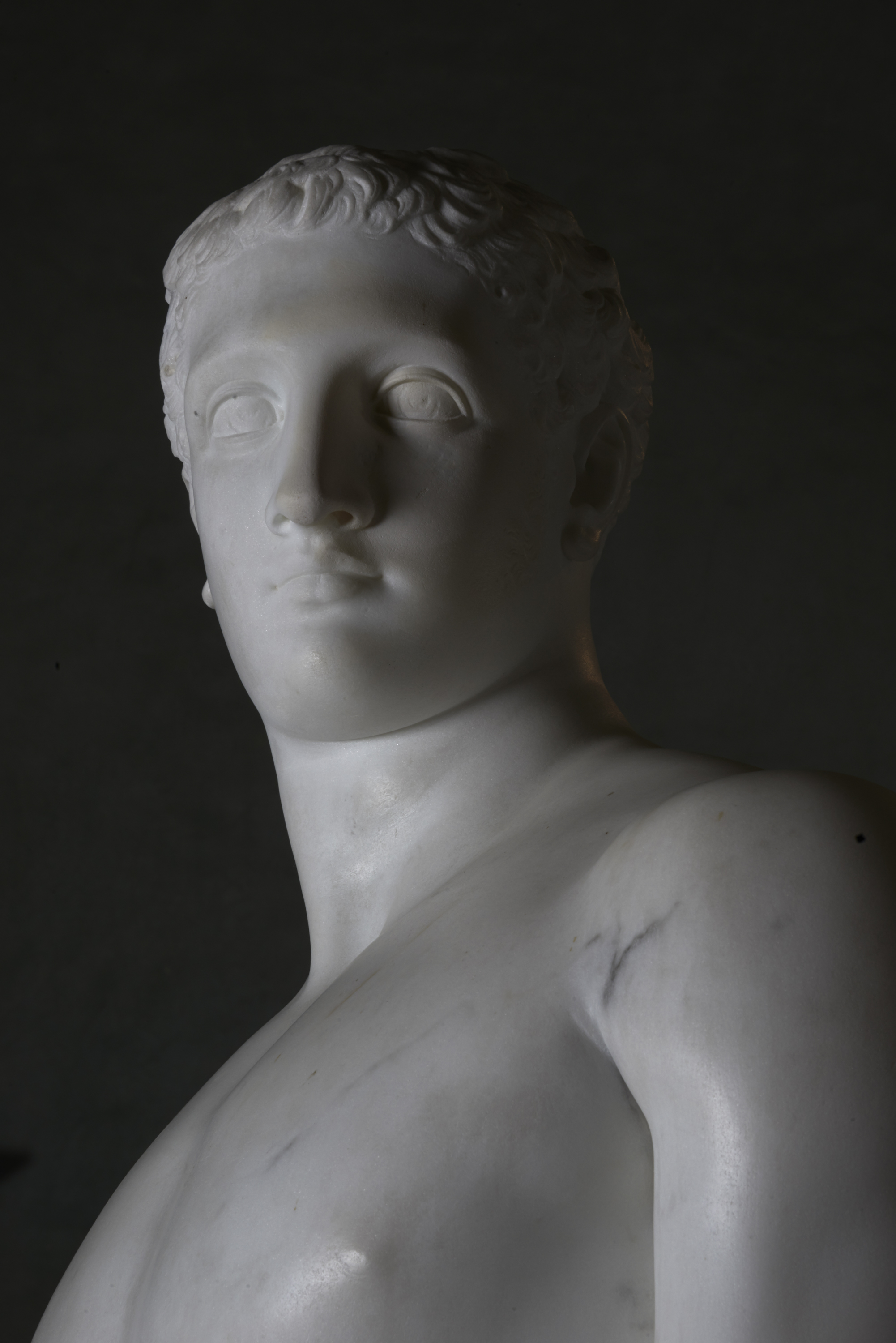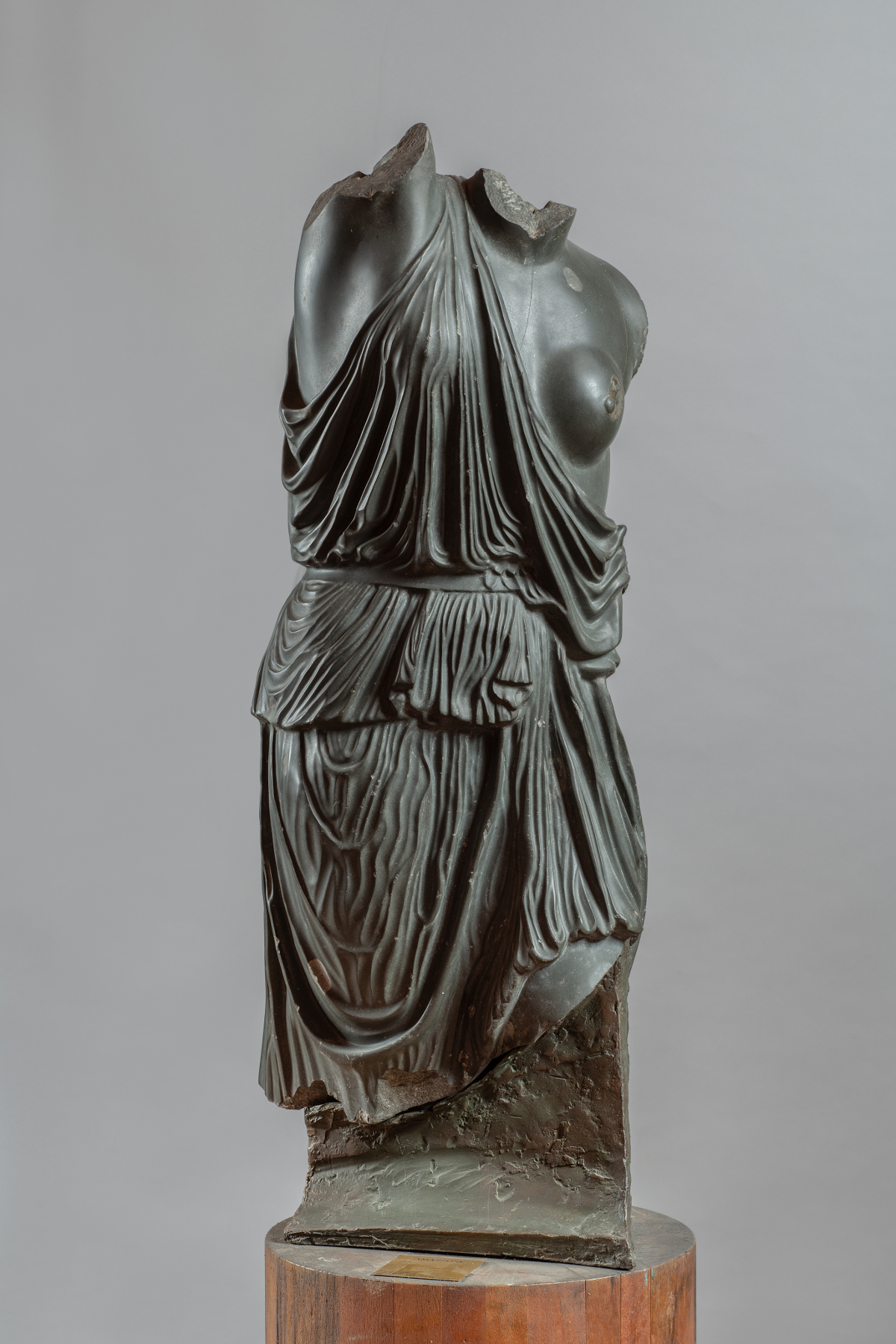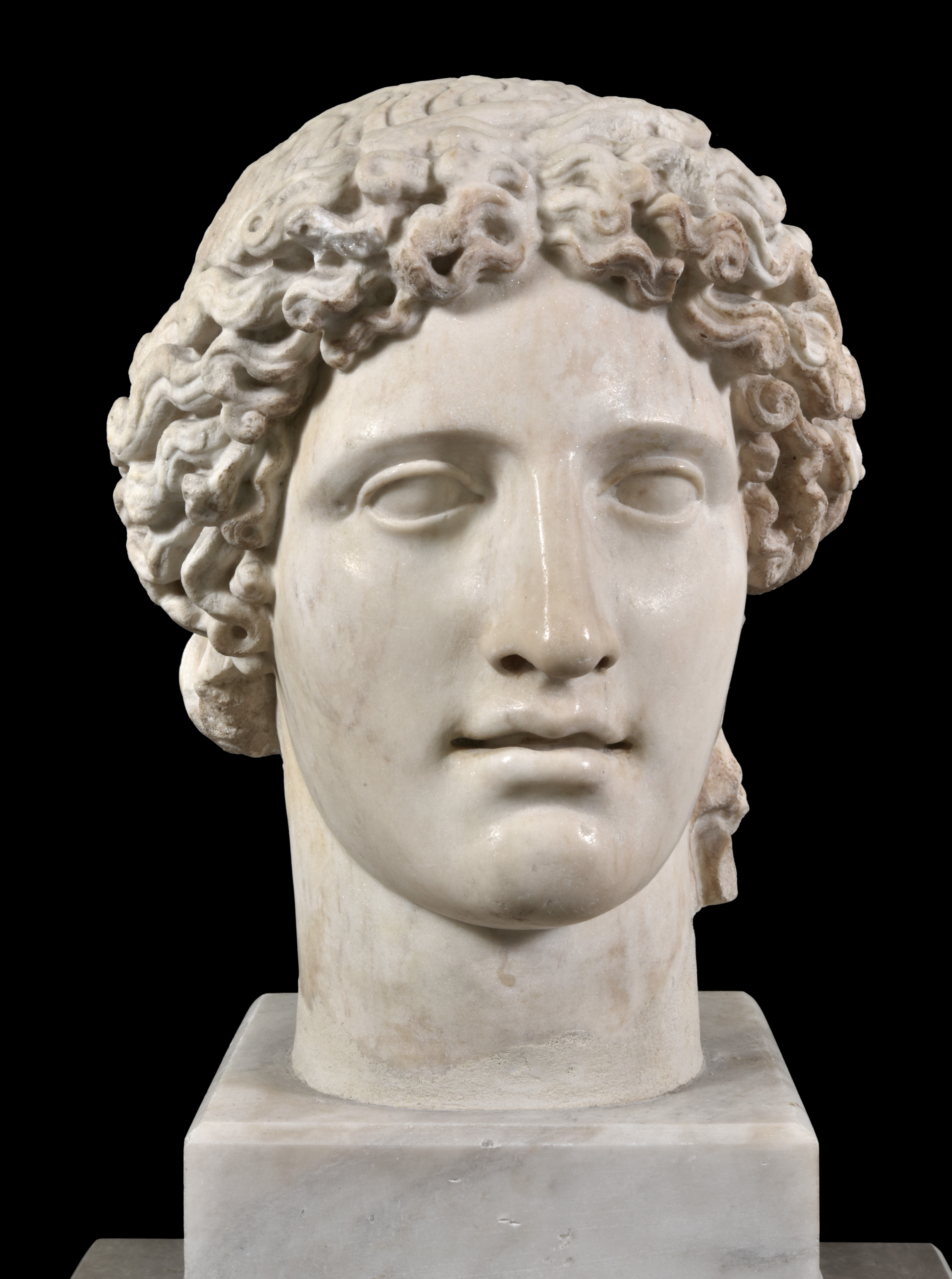Antonio Canova, Muse Terpsichore1811, original plaster, Tremezzina, Villa Carlotta, Museum and Botanical Garden
Now, on the occasion of the second centenary of the death of the sculptor from Possagno (13 October 1822), Villa Carlotta celebrates the legacy of one of the greatest masters of all time who transformed the very idea of sculpture and its technique through immortal masterpieces that have become popular and reproduced all over the world.
From 24th September to 11th December the exhibition Canova, new Phidiascurated by Gianfranco Adornato, Maria Angela Previtera and Elena Lissoni, ready to inaugurate in the suggestive Villa di Tremezzo, on the shores of Lake Como, will put in dialogue the artistic poetics of Canova with that of Phidias of Athens, his “alter ego” of antiquity.

Antonio Canova, Palamede, 1796-1805, marble, Tremezzina, Villa Carlotta, Museum and Botanical Garden
The public will be invited to embark on an unprecedented journey listening to the whispers among the museum’s Canovian works and important archaeological finds on loan from major Italian museums. The Torso of the wounded Amazon of the collections of the Royal Museums of Turin, the only version in the world in basanite, will dialogue with the original plaster of the Muse Terpsichore by Antonio Canova from the collections of Villa Carlotta, while the subject of the Amazon can also be appreciated in the form of a herm from the famous Villa dei Papiri in Herculaneum, now a treasure of the National Archaeological Museum of Naples, and in a miniature version in bronze coming from the National Archaeological Museum of Florence.

Torso of a wounded Amazon, Roman copy, 2nd cent. AD, green basanite, Royal Museums of Turin, Museum of Antiquities, inv. 284. With the concession of the Ministry of Cultural Heritage and Activities and Tourism – Royal Museums
On display it will be possible to trace the famous Fidian statue in gold and ivory that stood in his temple in Olympia, considered the fourth wonder of the world, through one of only two ancient coins surviving to this day, dating back to the last years of Hadrian’s reign.
The dialogue between Fidia and Canova will reach its peak through the confrontation between the Head of Apollo of the Archaeological Museum of Naples and the Palamede canoviano, a symbolic work of Villa Carlotta. The itinerary is also enriched with some casts of the Parthenon sculptures from the Brera Academy of Fine Arts, with which Canova had intertwined a fruitful dialogue.
It was precisely the intervention of the sculptor from Possagno to ensure that the marbles, transported by Lord Elgin from Athens to London, finally had a paternity and a place of first order in the history of ancient, modern and contemporary art.

Head of Apollo of the Kassel type, Roman copy of the imperial age from a Greek original of the classical age – from 460 to 450 BC (original), 2nd cent. AD (copy), marble. MANN, National Archaeological Museum of Naples, Inv. 6. By permission of the Ministry of Culture – National Archaeological Museum of Naples | Photo: © Giorgio Albano
The visit to the exhibition is included in the entrance ticket to Villa Carlotta, open from Monday to Sunday, from 10am to 7pm (the ticket office closes at 6pm and the museum closes at 6.30pm). From 7 November to 11 December, during the closure of the Villa to the public, it will be possible to visit the exhibition by booking by writing to [email protected].
![]() Read also:
Read also:
• The other face of Canova, the European genius who taught the world about hope

